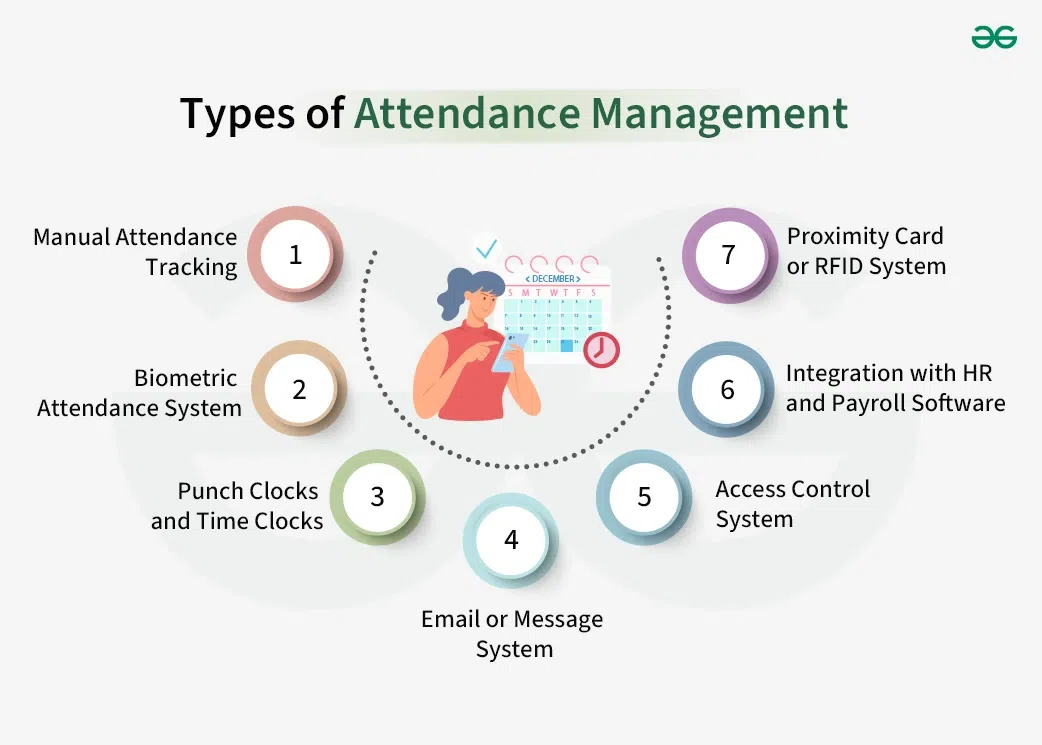What is Attendance Management?
Attendance Management can be defined as the process of monitoring and controlling employees’ attendance and work schedules inside an organisation. Attendance management is done for several reasons, such as compliance with labour regulations, computation of remunerations, tracking employee productivity, etc. In basic terms, attendance management refers to the method the human resource(s) apply to track the time their employees put in and the time they take off. HR can manage attendance by punching time cards, keeping track of employee hours on paper, using spreadsheets, or using online attendance software for the business.

Importance of Attendance Management
As attendance management fulfils various objectives, making it important for organisations to follow. Some of the importance of attendance management is stated as follows:
1. Payroll Accuracy: Accurately calculating employee wages and benefits depends on attendance management. Good attendance management can record the exact working hours of employees correctly.
2. Allocating Resources: HR can use attendance data to identify the ideal workforce levels, allocate resources wisely, and prepare for seasonal or peak workloads.
3. Leave Management: An organised attendance management system includes leave management, which makes it simpler for employees to request leaves of absence and for managers to grant or refuse them.
4. Employee Accountability: Attendance management promotes employee accountability for attendance and working hours.
5. Performance Evaluation: Attendance information may be taken into consideration when evaluating performance. An employee’s performance rating might be positively impacted by consistently keeping scheduled hours and being on time.
6. Legal Protection: Accurate attendance records can offer organisations legal defence in the event of conflicts or claims over employee time off, overtime, or attendance.
7. Cost Control: By reducing unapproved overtime and absence, effective attendance management aids in the management of labour expenses. It enables businesses to more precisely maintain budget for labour costs.
Types of Attendance Management

There are various types of attendance management systems. Some of them are as follows:
1. Manual Attendance Tracking: Employees manually sign in and out on paper time cards or attendance sheets for the manual attendance monitoring method, which is still used today. Despite being straightforward and inexpensive, it can be time-consuming to manage and prone to mistakes.
2. Biometric Attendance System: This precise system tracks employees’ attendance by using biometric identifiers like fingerprints, palm prints, facial recognition, etc.
3. Punch Clocks and Time Clocks: Employees utilise time clocks, which are electrical devices, to clock in and out. The software can be connected to modern time clocks to track attendance automatically.
4. Email or Message System: These are sometimes used by businesses to track employee attendance, especially in cases where workers work remotely or on flexible schedules.
5. Access Control System: These systems manage accessibility to secure areas within a facility, in addition to managing attendance. To visit specific sites, employees must use their access cards or biometrics, which also serves to track their attendance.
6. Integration with HR and Payroll Software: To automate payroll computations, leave management, and adherence reporting, many recent attendance management systems can link easily with HR and payroll software.
7. Proximity Card or RFID System: Employees check in and out using proximity cards or RFID badges. Depending on the system, it can also be used for attendance management.
Key Elements of Attendance Management
Several vital elements are necessary for accurate, legal, and efficient attendance management in HR. The main components are as follows:
1. Attendance Policies and Procedures: Establish clear and thorough attendance policies and processes that spell out what is expected of employees about on-time performance, breaks, leaves of absence from work, and reporting procedures.
2. Time Tracking Tools: Implement trustworthy time-tracking systems or tools that can reliably capture employee attendance.
3. Integration with Payroll: To automate salary calculations and lower the possibility of payroll processing errors, integrate your attendance tracking system with payroll software.
4. Data Security: Take precautions to protect your attendance data, especially because it includes sensitive information like biometric data. Ensure that data privacy laws are followed.
5. Regular Auditing and Review: Examine attendance records and procedures regularly to look for mistakes, discrepancies, or potential problems. Examine the suitability and compliance of attendance policies and procedures regularly.
6. Employee Training: Educate staff members on how to make use of attendance monitoring tools and comprehend attendance regulations. Make sure they are informed of how absences or schedule modifications should be reported.
7. Leave Management: Create a system that enables employees to seek various forms of leave such as sick time, vacation time, or any other leave for personal reasons, which also enables HR to easily track, approve, and manage these requests.
8. Performance Evaluation: Include attendance statistics as one factor when evaluating employees’ performance, encourage and reward those with good attendance records, and resolve difficulties with attendance-related performance.
9. Continuous Improvement: Based on customer input, shifting business requirements, and developing technology, continuously evaluate and enhance attendance management procedures and systems.
Share your thoughts in the comments
Please Login to comment...